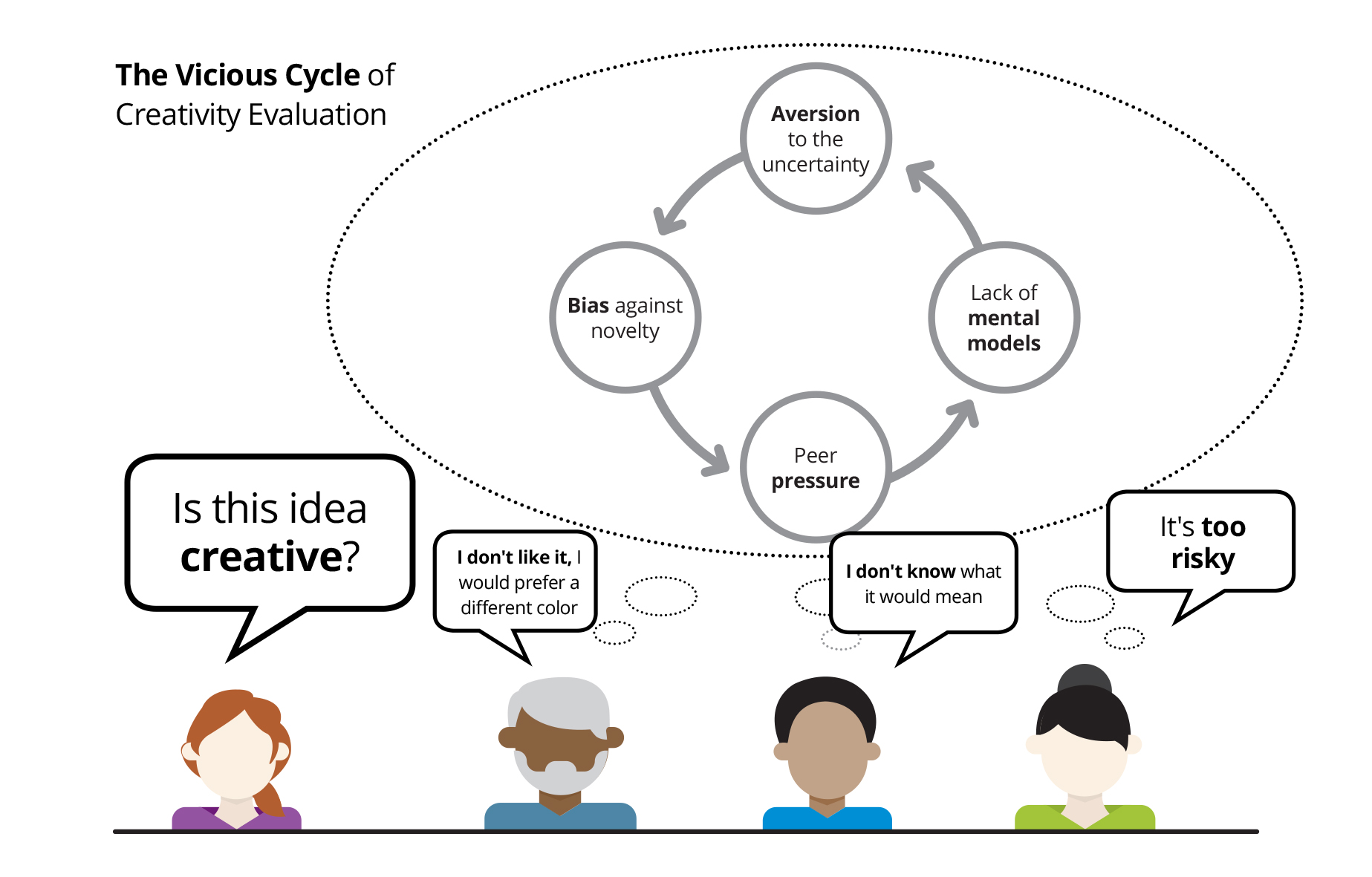
While creativity has become a common word in most contexts – creative technologies, creative policy making, creative science, the role that imagination plays is mostly unspoken. Similarly, despite the increasing demand for imaginative ideas that could lead to innovation, such ideas, once generated and shared for support or approval, are often blocked and never developed.
In a recent article published in the Nature Human Behaviour Journal, researchers Johnson and Proudfoot shed light on possible reasons why we – individually and as society – still struggle to value and support creative ideas (and even more with imaginative ideas) or even ideas that deviate from traditional expectations. Ideas are considered creative when they are novel / original and relevant / useful for a given task or content. When creative ideas are evaluated – either by peers, managers, friends, or colleagues – many unconscious factors contribute to negative results and ideas being dismissed. In particular, the following four factors create a vicious cycle:
Bias against novelty. People have an inherent negative attitude towards unconventional ideas because they are unfamiliar to what they have seen or experienced. As a result, there is a strong tendency to favor less imaginative ideas.
Aversion to uncertainty. Imaginative and creative ideas are different from what people have seen before, which often creates uncertainty in many fronts – Would the idea be successful? Would it be profitable? What would happen if it is implemented? How would people respond to such different views? The lack of predictability causes people to feel uncomfortable and often decide not to support different ideas.
Lack of common mental models. As people grow up and learn, they build mental models – described as templates in the article – about everything they know and understand. More novel ideas propose radically new ways or views about something for which people don’t have mental models on which to assess the value or relevance of such ideas. When people cannot match a novel idea to an existing mental model, they cannot see their value and, once again, prefer to reject them.
Peer pressure. In the 1950s, the Asch experiment demonstrated people’s tendency to conformity by showing how other people’s opinions and behaviors greatly influence our own thoughts, even if they feel wrong or we disagree. Evaluating creativity as a team appears to generate similar results. In these situation, people tend to get influenced by the majority’s preferences, unusual factors, and opinions. In other words, rather than judging an idea based on its originality, societal value, or relevance, the idea is assessed based on personal preferences.
To break with this cycle, Johnson and Proudfoot suggest comparing creative ideas with a well-known, established, and successful idea to help people match it with their mental models. Similarly, Wurman states that: You only learn something relative to something you understand. If people who are judging creativity struggle to understand the idea – either because it is unclearly explained or because its novelty triggers the vicious cycle – they won’t be able to see its value. This is why making comparisons and explicit connections between a novel idea and something that is familiar to the judges could increase the chances of novel ideas to be accepted or even to be considered. building on culture- and context-specific conventions can also be useful reference points for helping judges understand creative ideas.
—
– Johnson, W., Proudfoot, D. Greater variability in judgements of the value of novel ideas. Nat Hum Behav (2024). https://doi.org/10.1038/s41562-023-01794-4
– Wurman, R. Information Anxiety 1st ed. New York: Doubleday.
Leave a Reply to El cÃrculo vicioso que obstaculiza la imaginación y la creatividad – Sheila Pontis | FIBA Fundación para Investigaciones Biológicas AplicadasCancel reply